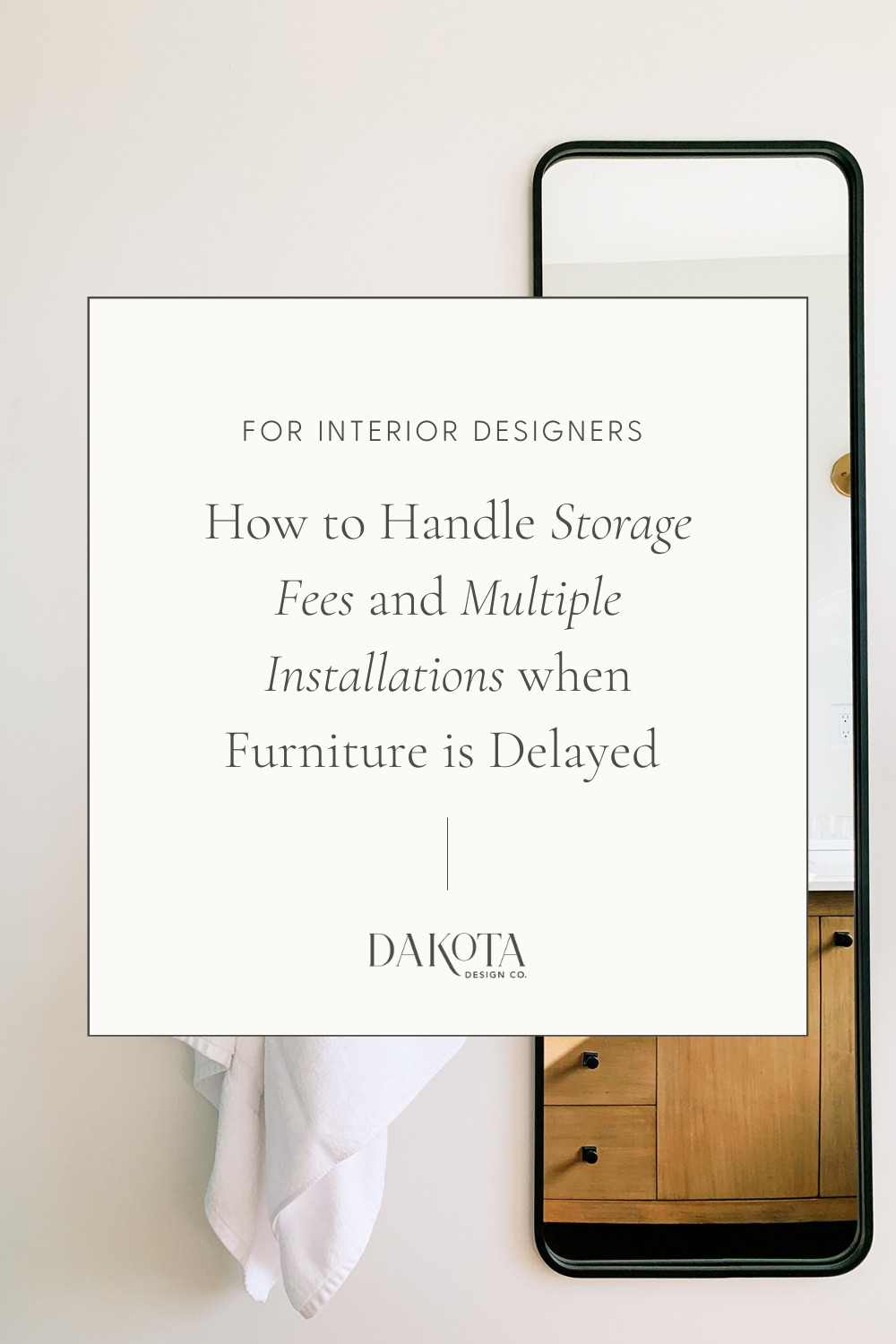Dear Dakota | How Do You Handle Storage Fees if There are Long Wait Times?
Updated September 2023
DESIGNER SUBMITTED QUESTION
How Do You Handle Storage and Receiving Fees when there are Long Wait Times?
How do you deal with invoicing storage fees if you’re forcing the client to wait until all installable items have arrived? Wouldn’t they be upset about that cost? And sometimes certain products are back-ordered, but they don’t want to wait six months for their entire installation just because a couple of nightstands are missing. How do you get clients to be happy with those sacrifices?
Thank you to the interior designer who submitted this question. If you have any insights you’d like to share, I’d love to hear them. Email me!
Here’s my advice on how interior designers should handle storage fees for delayed items
It all comes down to your interior design contract, how you want to work, and what is best for your client based on your experience.
Storage fees, receiving fees, and how many installation days are included (or how install days are billed) should all be written into your interior design contract based on what you require and how you bill.
I completely agree with your clients not wanting to pay storage for tons of items if they're just waiting on a few non-critical pieces. Typically, what our designers do is a mini install with a majority of the items and then a final install with the rest of the items and any accessories, plants, etc., if styling is included. If you go this route, you would want to specify that your scope includes a mini-installation and a final installation (or that the client will be billed hourly for a mini-installation and a final installation).
If you only do one installation for your interior design clients
For designers who only do one install, you could include up to a certain number of storage months in the receiving fee, and then beyond that, the client would be responsible for any overages. For designers who charge receiving and white glove delivery as a flat fee of the item price, they’ll typically include a certain number of weeks or months of storage with that flat fee. Beyond that timeline, additional storage is extra and billed based on the receiver’s storage policies. PS: Be sure to get that information from your receiver so you can share it with your clients.
If a majority of items are at the receiver and it's just two nightstands you're waiting on, most designers would deliver and install the entire room, then have the final remaining pieces delivered once they arrive. And, the designer wouldn't need to be on-site to receive and place those final two items because they would just need to be placed in the correct spot in the room.
If you are okay with items being delivered ahead of time to your interior design clients
For designers who only include one install where they are on-site managing all the pieces BUT are okay with clients having items delivered ahead of the final install if they’ve arrived early, they typically are not on site when the items are delivered.
If the client wants the items outside of what the designer offers, the client would simply be home to receive those deliveries and manage the delivery company. Note: Some designers won’t do this, and it can cause issues if a client sees one furniture item out of context of the completed space. So this is up to your discretion. Before Covid, it was more common not to have anything delivered ahead of time. Post-COVID, we’re seeing more mini-installs with the designer on site and then a final install with styling.
If you prefer to be on-site for every delivery
If you prefer to be on-site for every single delivery that takes place (I don’t recommend this at all), then you would definitely want to state how that is billed in your contract OR how many of those on-site delivery coordination visits are included in your flat fee. I personally don’t think this is a good client experience to include, nor is it easy to accommodate unless you have a design assistant who can be out and about all the time. Even then, I would question it. Not just as a heavy expense for your client but also for the experience of all the disruptions and a feeling to the client like the project kept dragging on.
Have questions about working with a receiver and charging storage fees?
If you have questions about receiving warehouses or addressing receiving fees and storage fees in your contract, you might also like these resources:
What is a Receiving Warehouse and Why Your Business Needs One
Want more tips and insights on designing a profitable and sustainable design business? Add your name below and we’ll deliver The Weekly Install straight to your inbox every Friday.
Looking for more? Keep reading:












